Insulation Tips
Polyester vs Glasswool
An investment for the life of your home
Insulation is an investment in the future comfort and energy efficiency of your home. When deciding on a brand and type of insulation, you need to ask yourself some key questions. We hope this article will help you to make an informed decision.
Most insulation brands sold in Australia are made from glasswool, also known as fibreglass. Glasswool has numerous benefits which make it such an effective insulation material. It’s main ingredient being recycled glass and sand, it can’t catch fire, does not attract vermin, doesn’t rot, and isn’t prone to absorbing airborne moister. It’s fairly easy to cut with a sharp knife, and quite simple to install. The millions of tiny airpockets give glasswool its fantastic insulating properties.
So what are the advantages of polyester then?
In this example we’ll compare glasswool with GreenStuf, which is manufactured from 100% polyester. GreenStuf has practically all the above mentioned benefits, and it also has some additional benefits. It contains no breathable fibres and is certified as being not flammable.
This may be significant for asthma sufferers or those suffering from serious dust allergies, and is probably one of the main advantages of polyester insulation. Now how much dust (say in your ceiling space) will actually find it’s way into the living area? That’s a very good question, and the answer is probably ‘not much.’ The most dust you will likely experience invading your home from the ceiling space will be when you attempt to change a ceiling downlight globe. However here it’s important to point out that in an old ceiling, there is likely to be a lot of dust anyway – regardless of whether or not there is insulation in the roof space, and regardless of whether any insulation installed is polyester or glasswool. But it would be fair to assume that if all other factors were equal, polyester would be the least dusty alternative, in particular in a new building.
Huge difference in delivery costs
A key difference worth noting if you’re planning on ordering insulation, is the cost of getting it delivered. Polyester is typically a bulky product when compared to glasswool. If you live in or near one of Australia’s biggest cities, this will probably be of little concern. However once you move away from Sydney, Melbourne, Brisbane or Perth, then delivery can become very costly.
For example, if you have a 130m2 ceiling, and you plan to insulate it with R3.5 Earthwool ceiling insulation. This will easily fit onto one pallet, whereas you would need around 4 pallets (or pallet spaces) to ship the equivalent R3.5 GreenStuf ceiling insulation. In practice this means you might quickly find yourself needing to factor in an extra 30% – 40% of the materials cost simply to cover the freight costs, especially if you live in a remote area. With glasswool, in most cases the delivery fees will be more be in the order of 10%- 20%. These are not exact figures, but can provide a helpful indication.
Summary and conclusion: glasswool vs polyester batts
Polyester insulation is exceptionally soft to handle and has no dusty particles, making it an extra attractive option for allergy sufferers. We recommend you use our website shopping cart to calculate the cost of either option, and confirm the delivery cost with us if you live outside Sydney or Melbourne. Then compare the difference in costs, and determine whether the extra cost of the poly insulation option is justifiable. If you need more advice, don’t hesitate to contact us on 1300 729 639!



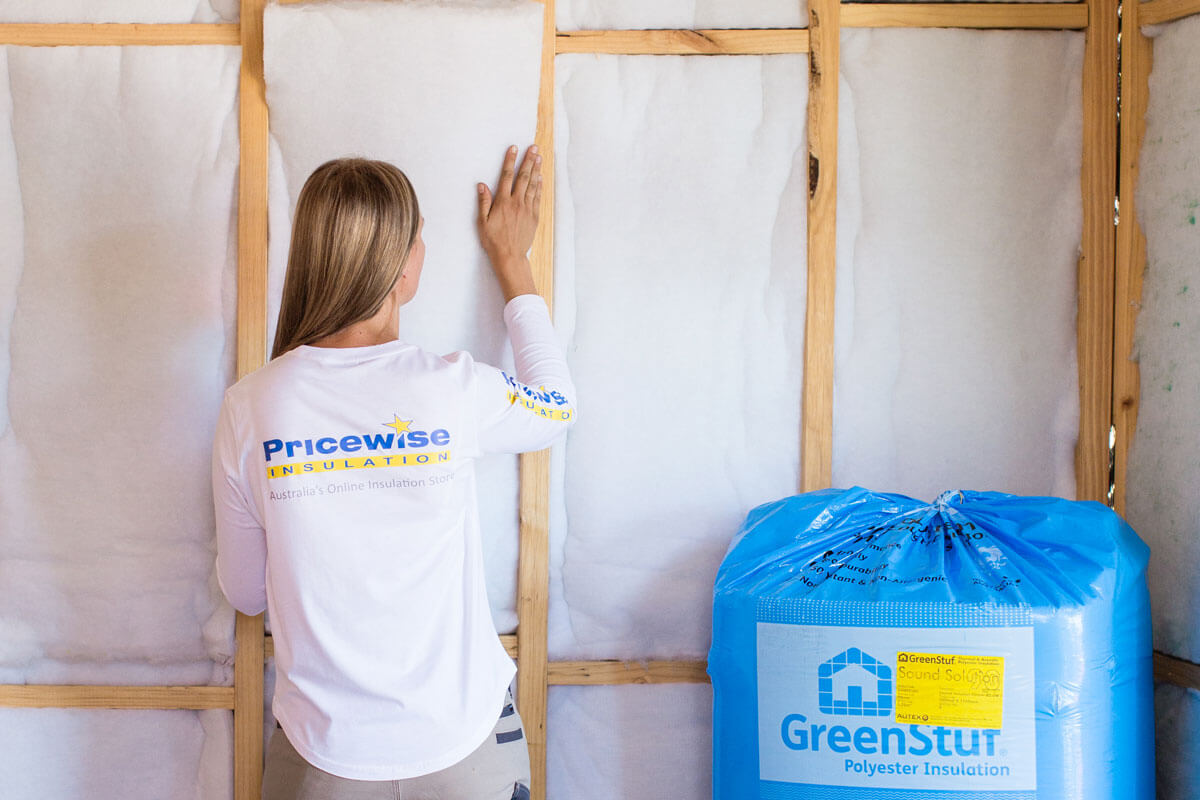
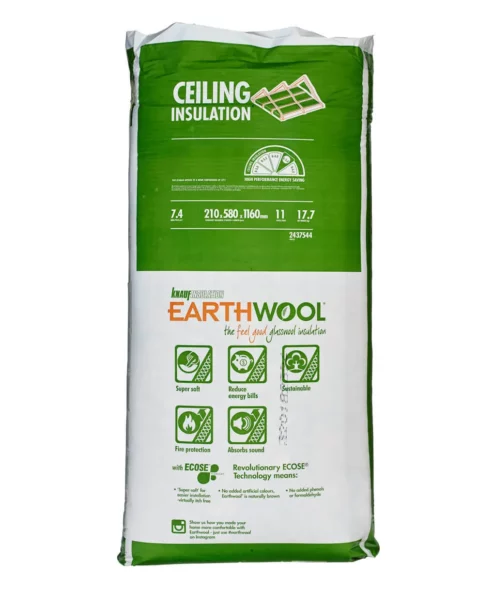
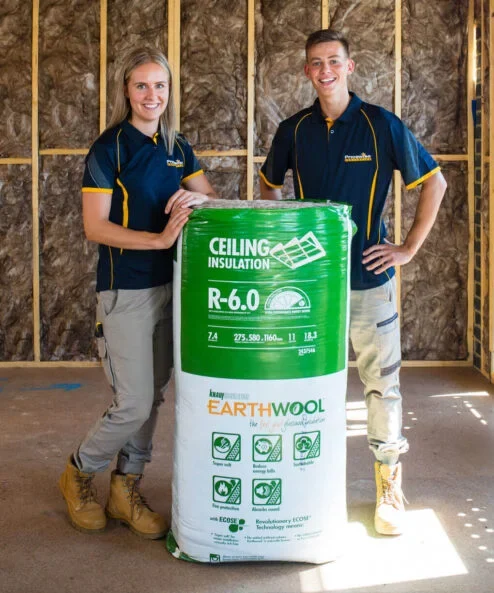
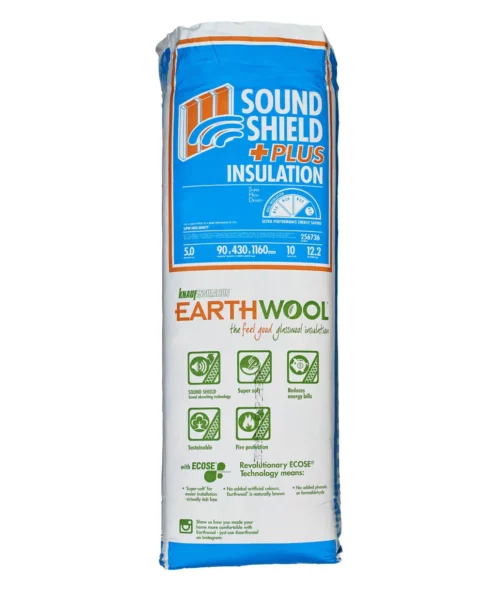
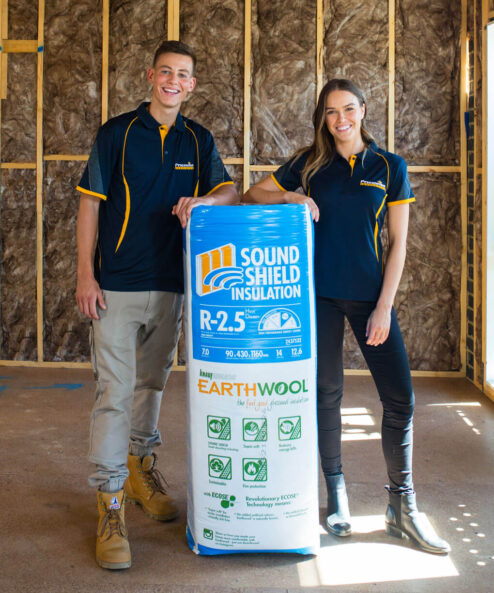
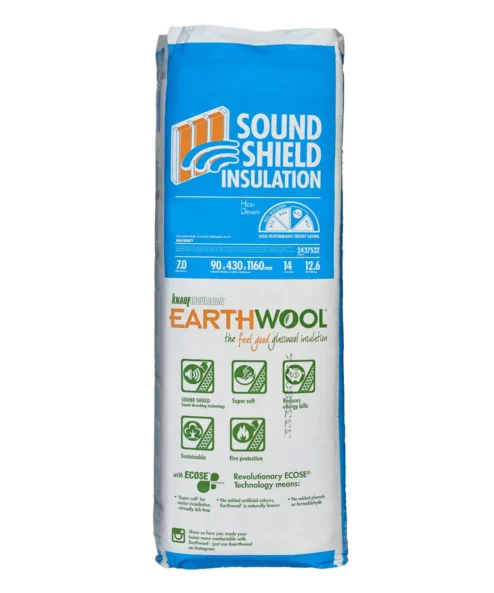
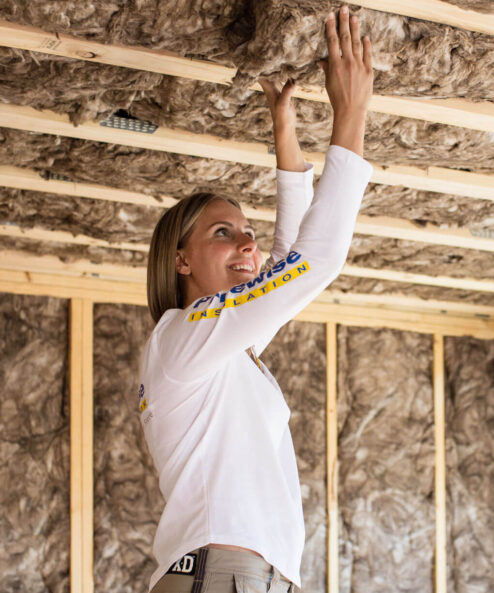
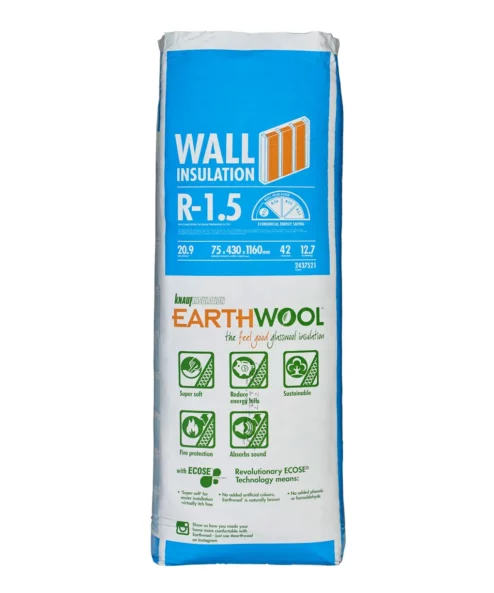
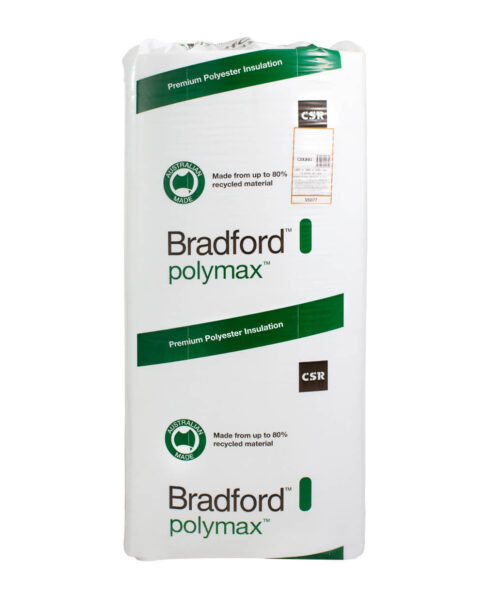
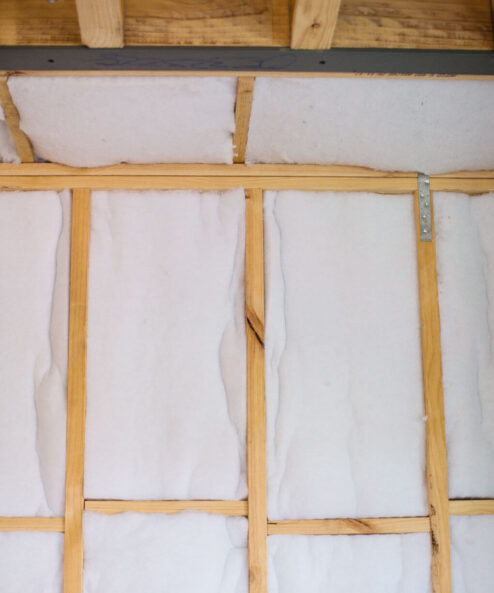
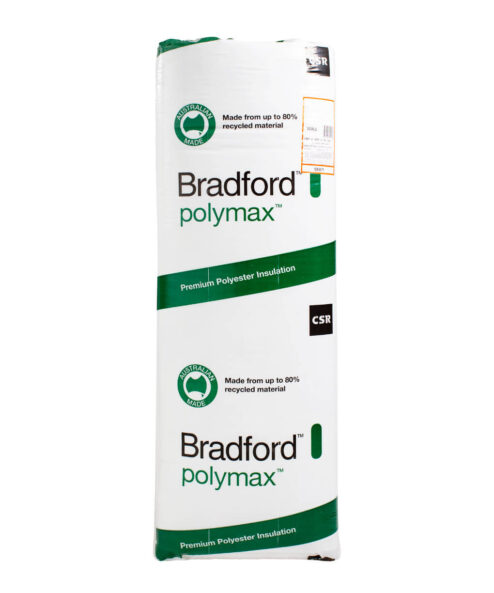
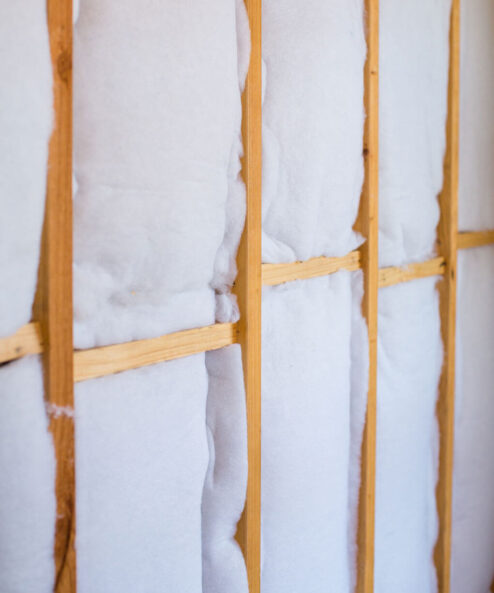

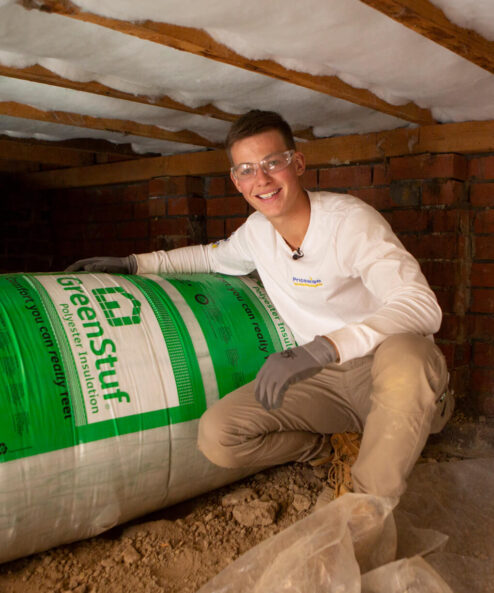
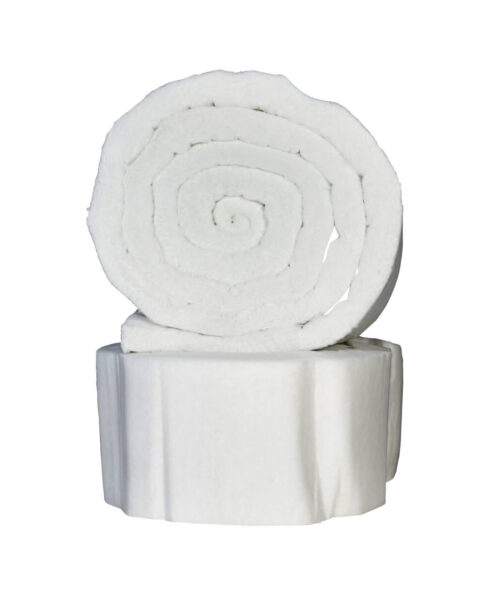
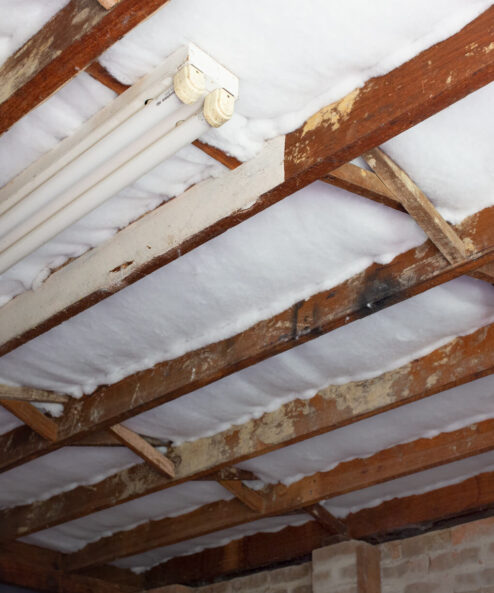
But what about the insulation abilities of the above mentioned batts? Is one better than the other in that regard? Does one out do the other when it comes to staying in place and not sagging? How do they hold up overtime? Is a roll of insulation better than individual batts?
A bit more info is needed to really compare one form of insulation against another.
Hi Melissa,
The performance of the insulation really depends on the R-value. An R2.0 Greenstuf Polyester Batt and an R2.0 Pink Batt will provide the same thermal performance. Our professional installers use glasswool batts in the walls and ceilings and polyester rolls in the underfloors of new homes. That being said, we do not recommend buying low quality fibreglass batts produced in Asia. Stick to well known brands such as Earthwool, Bradford, Pink Batts and Greenstuf.
R2.0HD Knauf Earthwool Acoustic Batts are more rigid than normal R2.0 thermal batts and therefore less likely to sag in the walls. However, R1.5 and R2.0 thermal wall batts also work well when installed correctly.
If you need to cut your batts to fit the wall joists, make sure you cut them a little wider than the spacing between the joists. They shouldn’t be so wide that the edges fold in but they should fit in snugly. You can find some useful information on our DIY video page.
If you have any more questions please don’t hesitate to contact us on 1300 729 639.
Which is more environmentally friendly?
Glasswool is made from recycled glass, which is great!
Cheers!
Pricewise Insulation
it is my experience being in the building trade for 30 plus years that while fibreglass is cheaper it collapses after 10 years rendering it useless and a cost and a hazard to remove and replace.
Polyesyter is a newer product and i have not seen it at all collapse over the time I have been using it in homes.
Go and feel the same rated batts for similar applications and be your own judge.
I would rather install a polyesyter batt than a fibreglass one because of the fibres given off during installation.
don
Is there a difference in price glasswool vs polyester?
Hi Bruno,
Thanks for your question. You will generally find that glasswool is more cost effective than polyester.
Cheers!
HI
Can glass wool irritate your skin?
Hi Jake,
Yes, glasswool can irritate the skin which is why we recommend wearing a long sleeve top and pants. We also recommend having a cold shower after installing the insulation to close the pores in your skin, so that the remaining glasswool fibres just wash away. Earthwool is the least itchy of the different brands in Australia, which is why our professional installers often use this product. Feel free to contact our team on 1300 729 639 if you have any further questions.
Cheers!
Hi,
Can polyester batts be used in walls when not using a vapor wrap while retrofitting insulation in an older weatherboard home?
Hi Sam,
Yes, you can install polyester insulation batts when not using a vapour barrier.
Cheers,
Christa
Hi,
Is there any reason why I can’t put what R level I want in the ceiling to replace old insulation? I want to put R5 or R6 – cold mountain climate; 1989 built home. Is it because of the height of joists and the thickness of R5 or R6 batts that this couldn’t be done the same as a lower R? I’m getting conflicting info from installers. Is it normal to put insulation “over” the joists? Or to put say an R4 and an R2 on top to do this?
Hi Jo,
Thanks for your question. If you live in a cold mountainous area of Australia, then we certainly recommend installing R6.0 ceiling insulation. If your home has existing ceiling insulation in good condition, then you could install a lower R-value such as R4.0 ceiling insulation to top up the existing layer.
In terms of which direction to install the insulation (between the joists or “over” the joists), we recommend watching this video: https://www.youtube.com/watch?v=AQSkC4RJjhA.
If you don’t have any existing insulation or the existing insulation is below the height of the joists, then we recommend installing the ceiling insulation snugly between the joists (it’s OK if the top part sits above the height of the joists). If the existing insulation reaches the top of the joists, then we recommend installing the insulation in the opposite direction so that there are no gaps.
Feel free to give our team a call on 1300 729 639 if you have any further questions.
Cheers,
Christa